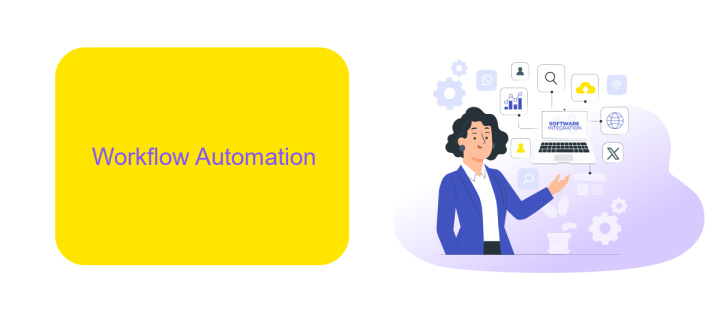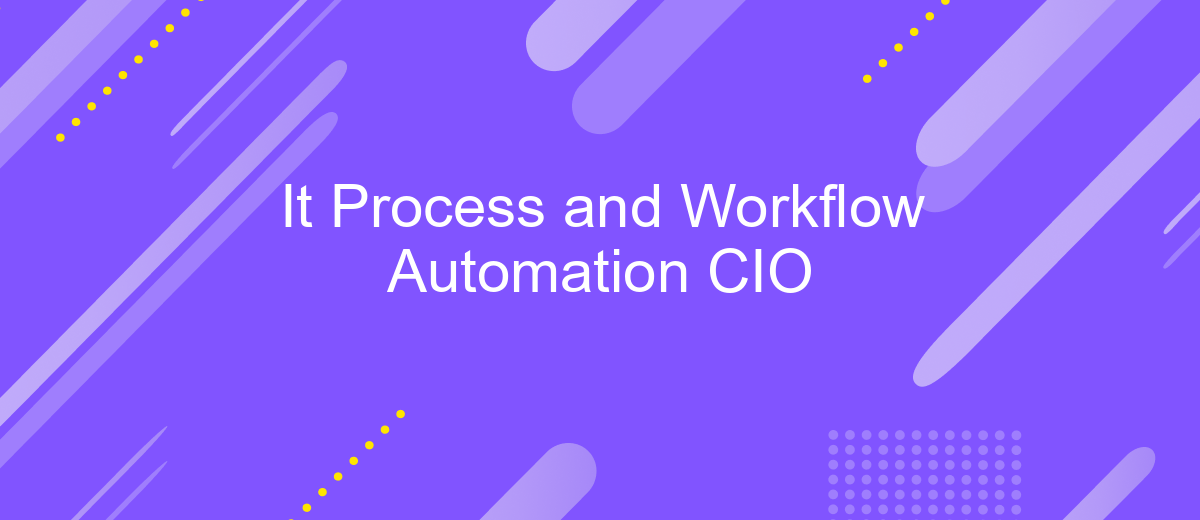It Process and Workflow Automation CIO
In today's fast-paced digital landscape, IT process and workflow automation has become a pivotal strategy for CIOs seeking to enhance operational efficiency and drive innovation. By leveraging advanced technologies, organizations can streamline tasks, reduce human error, and optimize resource allocation. This article delves into the transformative impact of automation on IT processes, offering insights and best practices for CIOs aiming to stay competitive.
IT Process Automation
IT Process Automation streamlines and optimizes repetitive tasks, reducing human error and freeing up valuable time for strategic initiatives. By automating processes, organizations can achieve greater efficiency, consistency, and scalability. This is particularly critical for CIOs aiming to enhance operational performance and maintain a competitive edge.
- Reduces manual intervention and errors
- Enhances workflow efficiency and speed
- Improves data accuracy and decision-making
- Facilitates scalability and growth
- Enables seamless integration with other systems
ApiX-Drive is a powerful tool that helps in configuring these integrations effortlessly. It connects various applications and services, allowing data to flow smoothly between them without the need for complex coding. By leveraging such tools, businesses can ensure that their IT processes are not only automated but also well-integrated, leading to a more cohesive and efficient operational environment.
Workflow Automation

Workflow automation is a critical component in modern IT operations, enabling organizations to streamline their processes and enhance productivity. By automating repetitive tasks and orchestrating complex workflows, businesses can reduce human error, increase efficiency, and free up valuable resources for more strategic initiatives. Tools like ApiX-Drive facilitate seamless integration between various applications and services, ensuring that data flows smoothly across systems without manual intervention.
Implementing workflow automation involves identifying key processes that can benefit from automation and selecting the right tools to execute them. ApiX-Drive, for instance, offers a user-friendly platform that allows businesses to easily set up integrations and automate workflows without extensive coding knowledge. This not only accelerates the implementation process but also ensures that the automated workflows are scalable and adaptable to changing business needs. In essence, workflow automation empowers CIOs to drive digital transformation and maintain a competitive edge in an increasingly dynamic market.
Benefits of Automation

Automation in IT processes and workflows offers numerous advantages, significantly enhancing efficiency and productivity. By automating repetitive tasks, organizations can reduce human error and free up valuable time for employees to focus on more strategic activities. Furthermore, automation facilitates consistent and reliable outcomes, ensuring that processes are executed in the same manner every time.
- Increased Efficiency: Automation accelerates task completion, reducing the time required for manual intervention.
- Cost Savings: By minimizing the need for human resources in routine tasks, organizations can cut operational costs.
- Improved Accuracy: Automated systems reduce the likelihood of errors that are common in manual processes.
- Scalability: Automation allows businesses to easily scale their operations without a proportional increase in workload.
- Enhanced Integration: Tools like ApiX-Drive streamline the integration of various software applications, ensuring seamless data flow across systems.
Ultimately, the adoption of automation in IT processes leads to a more agile and responsive organization. By leveraging tools and services that facilitate integration, such as ApiX-Drive, businesses can ensure that their workflows are not only efficient but also adaptable to changing needs and technologies.
Challenges of Automation

Implementing automation in IT processes and workflows presents several challenges that organizations must address to ensure successful outcomes. One of the primary difficulties is the integration of various systems and applications, which often operate on different platforms and technologies. This can lead to compatibility issues and require significant customization efforts.
Another challenge is the resistance to change from employees who may be accustomed to manual processes. They might fear job displacement or feel overwhelmed by learning new automated systems. Additionally, ensuring the security and compliance of automated workflows is critical, as any vulnerabilities can expose sensitive data to risks.
- Integration complexities
- Employee resistance
- Security and compliance concerns
To address these challenges, organizations can leverage tools like ApiX-Drive, which facilitate seamless integration between various applications and services. ApiX-Drive simplifies the automation process by providing a user-friendly interface and pre-built connectors, reducing the technical burden on IT teams. By adopting such tools, companies can overcome integration hurdles, ease the transition for employees, and maintain robust security standards.
CIO Perspective
As the Chief Information Officer (CIO), my primary focus is to streamline IT processes and automate workflows to enhance operational efficiency and drive innovation. In today's fast-paced business environment, integrating various systems and applications is crucial for seamless data flow and real-time decision-making. Leveraging advanced tools like ApiX-Drive allows us to connect disparate software solutions effortlessly, ensuring that our teams can focus on strategic initiatives rather than getting bogged down by manual tasks.
By automating routine processes, we not only reduce the risk of human error but also significantly cut down on time and costs associated with manual interventions. ApiX-Drive, with its user-friendly interface and robust integration capabilities, plays a pivotal role in our digital transformation journey. It enables us to set up complex workflows without extensive coding, thereby accelerating our ability to adapt to new business requirements and market changes. Ultimately, this approach empowers us to maintain a competitive edge and deliver superior value to our stakeholders.
FAQ
What is IT process and workflow automation?
How can IT process automation benefit my organization?
What steps should I take to start automating my IT processes?
Can IT process automation integrate with existing software and tools?
What are some common challenges in implementing IT process automation?
Apix-Drive is a universal tool that will quickly streamline any workflow, freeing you from routine and possible financial losses. Try ApiX-Drive in action and see how useful it is for you personally. In the meantime, when you are setting up connections between systems, think about where you are investing your free time, because now you will have much more of it.

